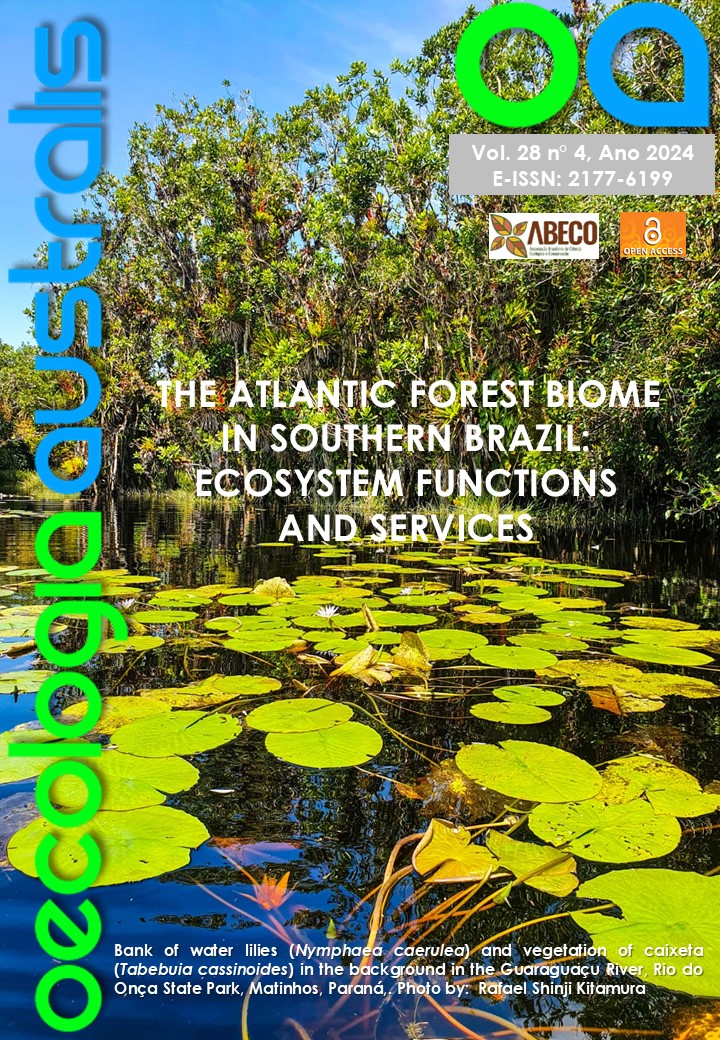SURVEY OF NON-FLYING MAMMALS IN A SEMI-DECIDUOUS SEASONAL FOREST FRAGMENT AT SÃO FRANCISCO FOREST STATE PARK
Survey of Non-Flying Mammals in Oecologia Australis
DOI:
https://doi.org/10.4257/oeco.2024.2804.06Abstract
The Atlantic Forest is a highly diverse biome due to its significant geographical variation in latitude, longitude, and altitude. Mammals are particularly susceptible to habitat fragmentation. Surveys of these group in forest fragments essential for conservation efforts. Surveys of non-flying mamals provide critical data on biodiversity, aiding in the protection and management of species and their habitats. To assess the richness of non-flying mammals in the São Francisco Forest Conservation Unit, we used direct observation methods and camera traps. The study began in early 2022 and was concluded in September 2023. We recorded 24 native species and two exotic species. Four species found are vulnerable to extinction: Herpailurus yagouaroundi, Leopardus guttulus, Leopardus wiedii, and Alouatta guariba clamitans. Notably, the most frequently recorded species was the exotic Sus scrofa (37% of records), followed by native species Dicotyles tajacu (18%), Didelphis albiventris, and Nasua nasua (both around 7%). The low richness can be attributed to factors like habitat fragmentation, historical anthropogenic impacts and the size and degree of isolation of the Conservation Unit. These findings include significant new records for the region, such as Dicotyles tajacu, which had not been documented in this fragment previously. However, the high frequency of the invasive species Sus scrofa poses a concerning impact on local biodiversity. This study highlights the fragment’s critical importance for maintaining the biodiversity of non-flying mammals in the Atlantic Forest biome.


